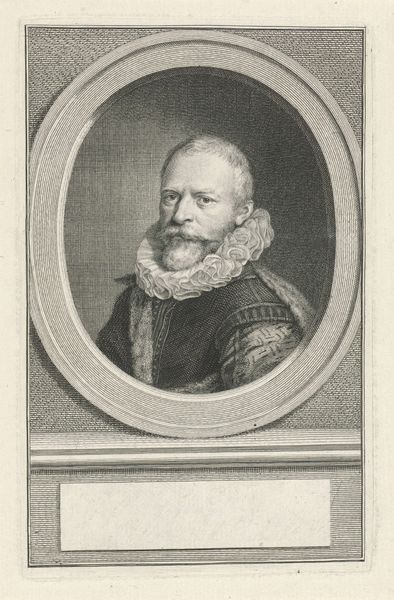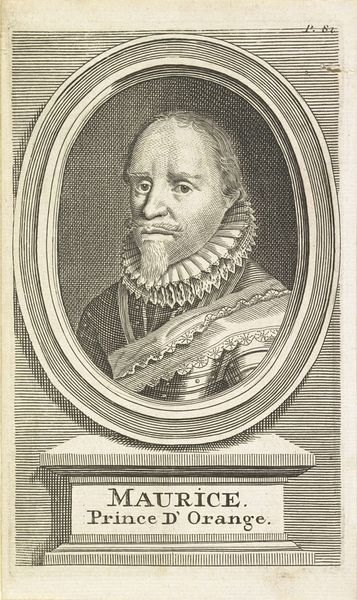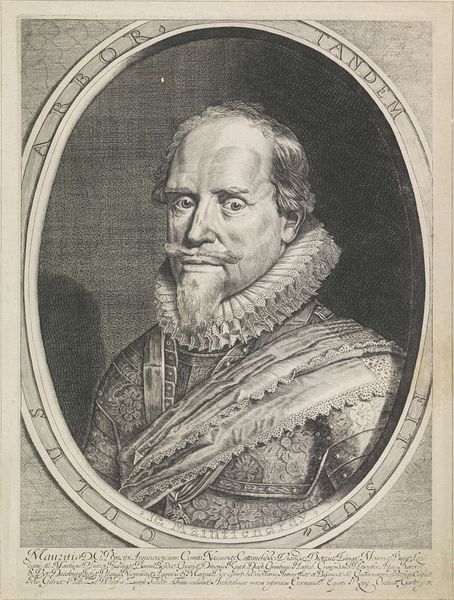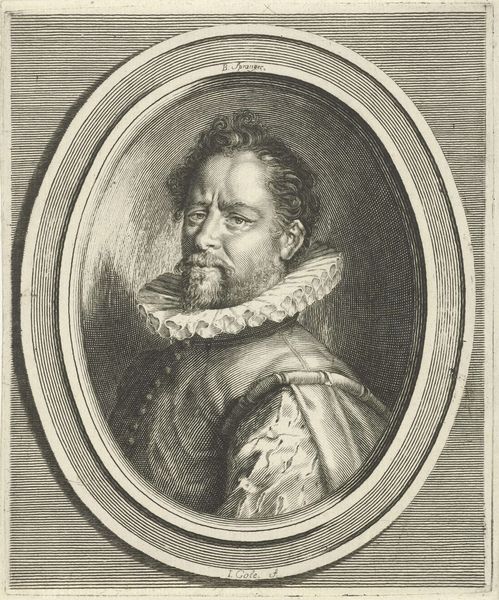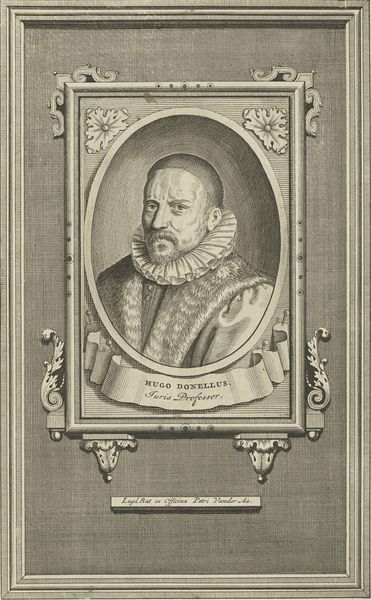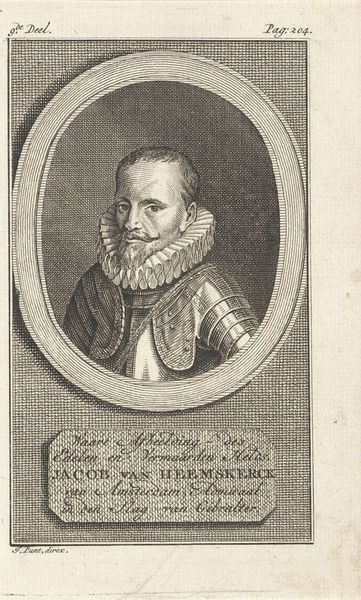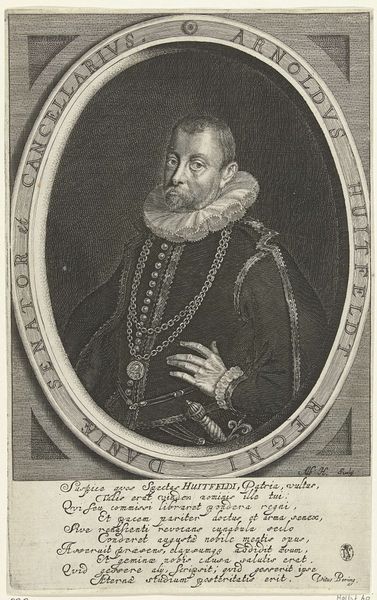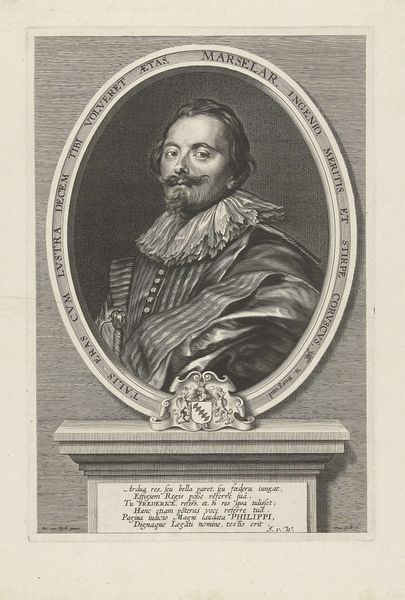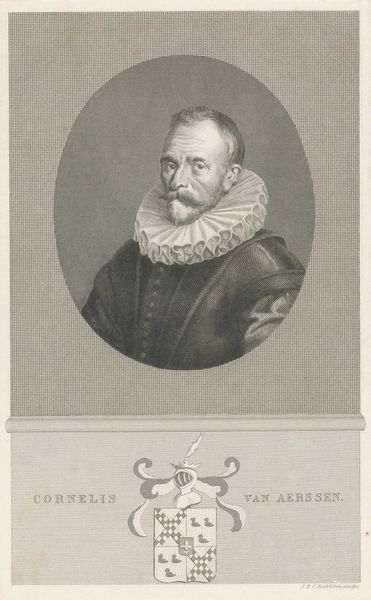
print, engraving
#
portrait
#
baroque
#
dutch-golden-age
# print
#
old engraving style
#
caricature
#
portrait drawing
#
engraving
Dimensions: height 130 mm, width 83 mm
Copyright: Rijks Museum: Open Domain
Curator: Here we have Hendrik Bary's portrait of Rombout Hoogerbeets, rendered in engraving, dating from sometime between 1657 and 1707. It’s part of the Rijksmuseum collection. Editor: My eye is immediately drawn to the collar—that exaggerated ruff frames his face like a halo, but a rather severe, almost judgmental one! The details in the fur trim and the tight lines of the engraving give a real sense of formality and, frankly, a touch of pomposity. Curator: The pomposity you detect wasn't accidental. This portrait served a very specific function. Hoogerbeets was a key political figure in Leiden, a city pensionary—effectively their legal counsel. Portraits of this era were about projecting authority. The ruff itself became a symbol of status. Editor: Absolutely. The oval frame is an echo of ancient Roman portraiture. What is intriguing is the subtle emotional texture—the somewhat weary gaze suggests there might be something else, beneath the official pose, maybe a hint of melancholy? Curator: I think the engraver is also offering an image that serves power. Bary is adapting an original image made by Michiel Jansz. van Mierevelt. These printed images enabled wider circulation of these esteemed figures' portraits within the Republic, reinforcing social hierarchies. Editor: Yes, there's a tension here—on the one hand, these prints disseminated images widely, but, as you say, to reinforce, not necessarily democratize, power. It makes me think about how we still use portraiture today, for political branding and image management. Curator: Precisely. And consider the visual language deployed here. The dense lines convey meticulous detail, imbuing Hoogerbeets with the gravitas befitting his station. Even the font chosen for his name beneath is intentionally dignified, it is almost literally inscribed in public memory. Editor: Seeing this, I’m thinking of the weight of representing not just a person, but an office. I keep going back to that ruff, which represents honor. I like that visual cues allow us to decipher so much, like a coded message. Curator: A visual script for power indeed, still readable centuries later. This portrait offers a window into the calculated construction of identity and influence. Editor: And perhaps also hints at the person behind the persona, the complexities lurking beneath the ruff and the rhetoric.
Comments
No comments
Be the first to comment and join the conversation on the ultimate creative platform.

